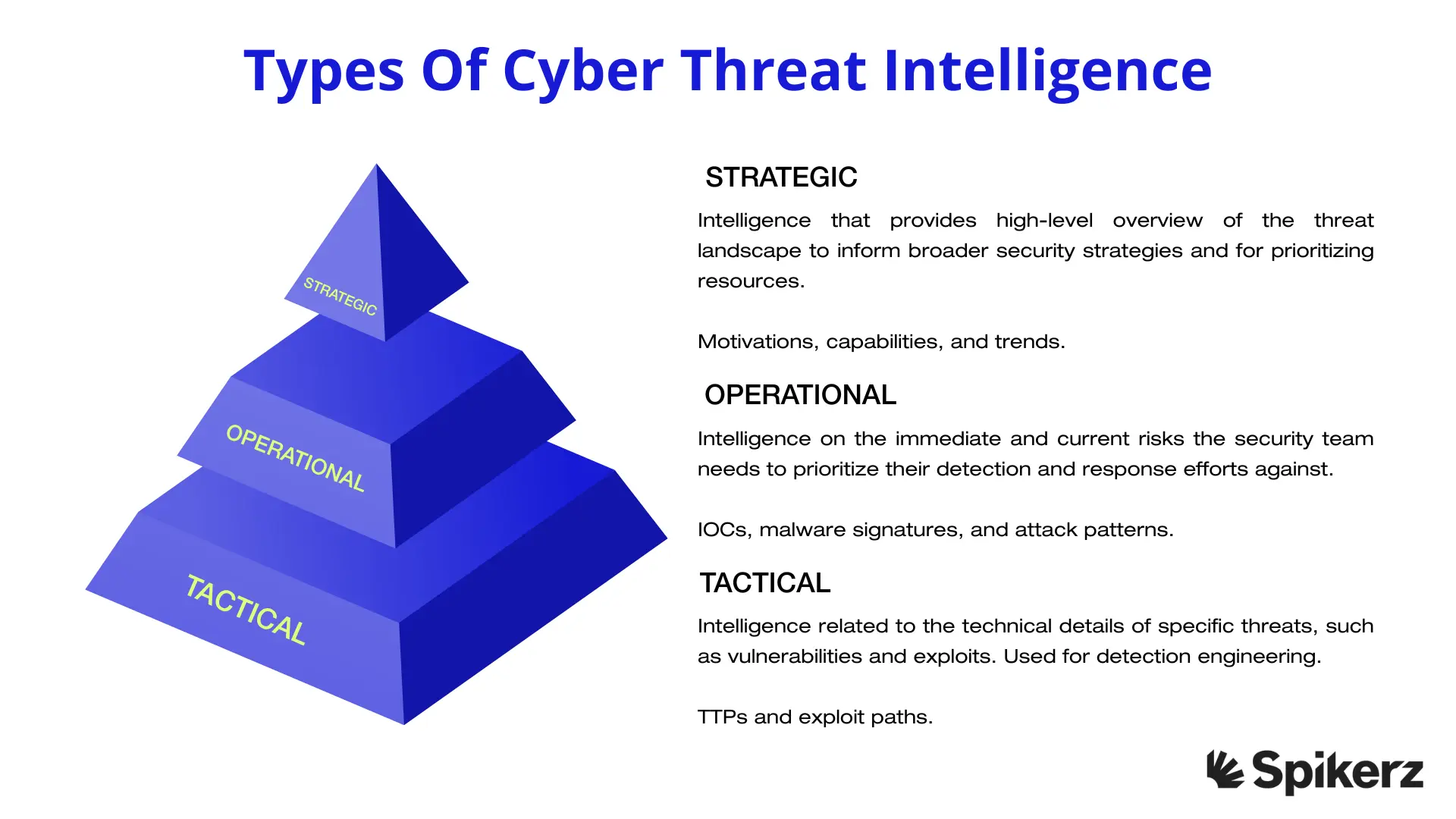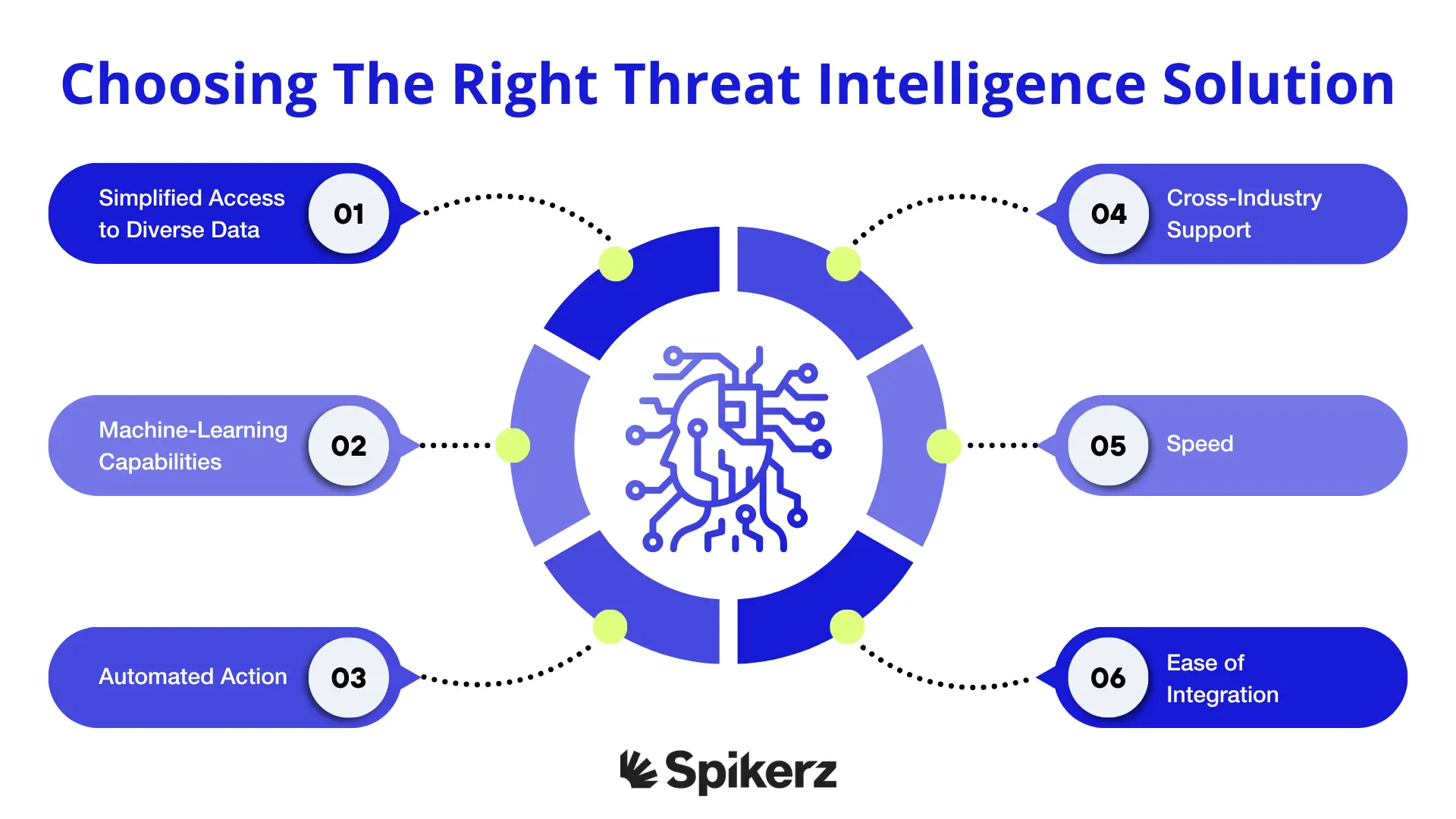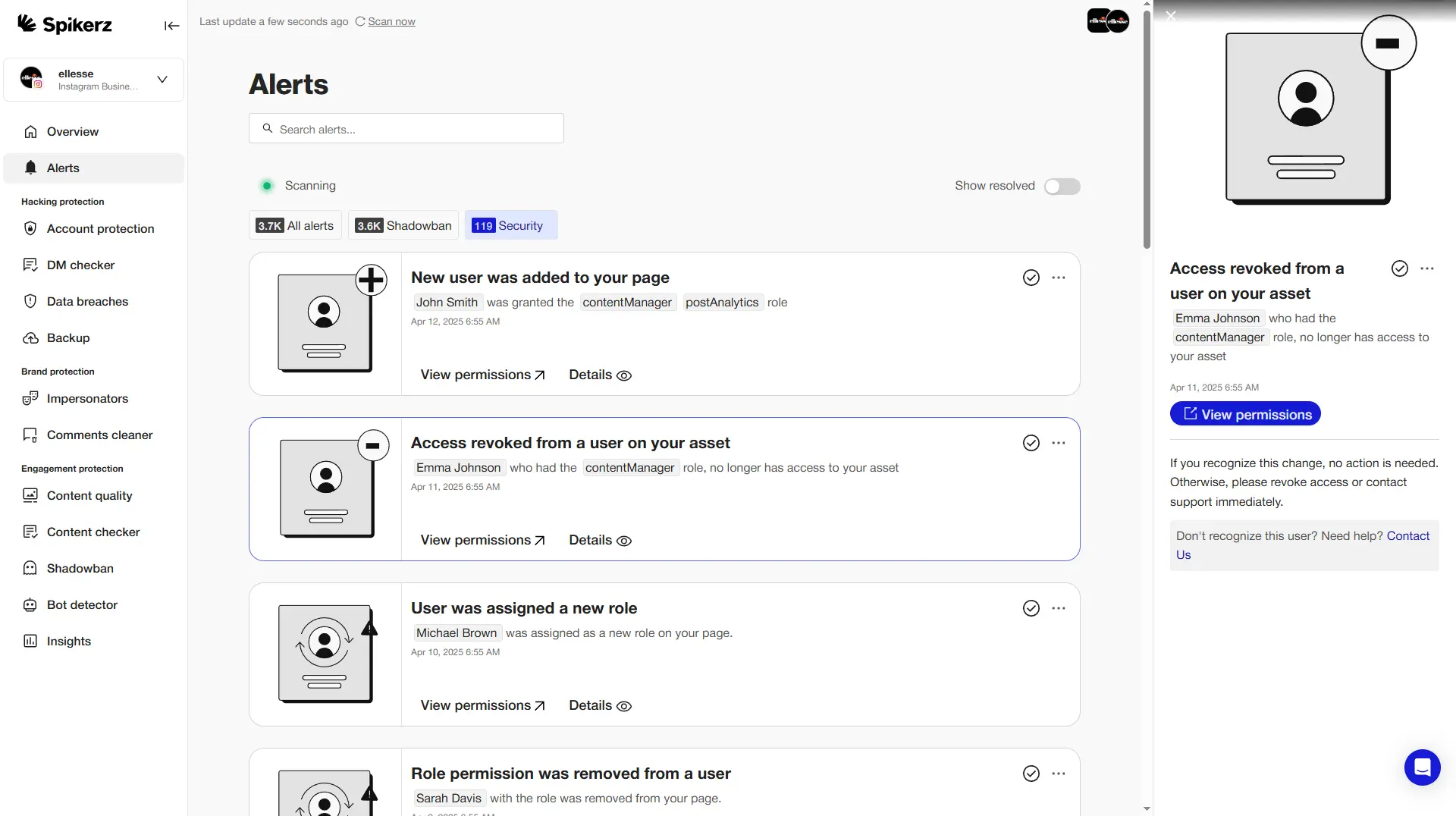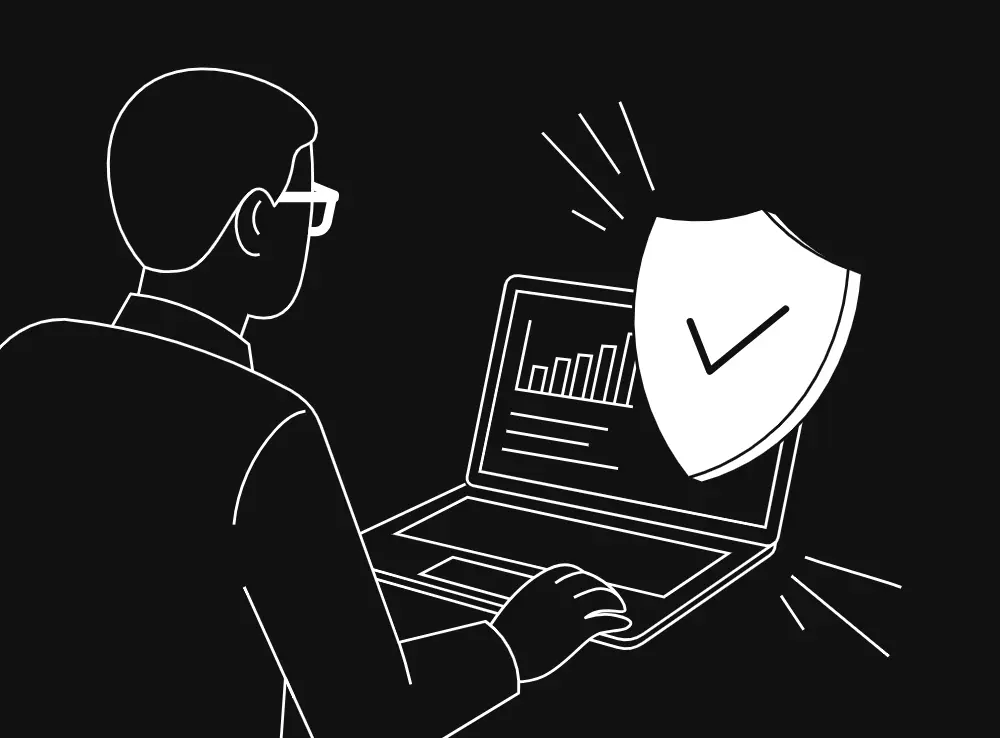What Is Cyber Threat Intelligence? And Why Is It Important?
What Is Cyber Threat Intelligence? And Why Is It Important?
Organizations face an overwhelming flood of security data from countless sources every day. Firewalls generate logs, intrusion detection systems trigger alerts, and threat feeds deliver streams of indicators. Yet transforming this raw data into actionable insights that protect your business continues to be a massive challenge.
The volume is just too much—security teams must analyze thousands of alerts, correlate data from dozens of tools, and identify genuine threats among countless false positives. Without the right approach, critical threats slip through while teams drown in irrelevant noise.
In this guide, we’ll explore what cyber threat intelligence is and why it's essential for modern security operations. We'll cover the different types of threat intelligence, explain why organizations need it, and show how the right solution can transform your security posture from reactive to proactive.
What Is Cyber Threat Intelligence (CTI)?
Cyber threat intelligence (CTI) is the process of collecting, analyzing, and applying data on cyber threats, adversaries, and attack methodologies to improve an organization's security posture. This systematic approach transforms scattered information into insights that drive security decisions.
CTI transforms raw threat data from multiple sources into actionable insights that enable organizations to anticipate, detect, and respond to cyber risks. Instead of reacting to attacks after they happen, security teams gain the knowledge needed to prevent them.
This approach shifts security teams from reactive responses to proactive defense against emerging threats. Organizations move beyond simply patching vulnerabilities to understanding who might target them, why they're attractive targets, and how attacks will likely unfold.
Types Of Cyber Threat Intelligence
Threat intelligence covers a broad range of information and analysis that can be categorized into several standard types. Each type serves different audiences and purposes within your security organization.
Here are the most prevalent types that security teams rely on:

Strategic Threat Intelligence
Strategic threat intelligence (STI) is a form of high-level threat intelligence that focuses on the broader cyber threat landscape and how it might affect an organization. This intelligence type operates at the executive level, informing long-term security planning.
STI provides a strategic overview on how cyber threats intersect with global events, geopolitical conditions, and organizational risks. It helps leaders understand how international tensions, regulatory changes, or industry developments might create new threat vectors.
It offers insights about threat actors' motives, capabilities, and targets, helping executives like CIOs and CTOs, and decision-makers outside of IT, understand potential threats. This intelligence translates technical risks into business language that leadership can act upon.
Unlike other types of CTI, strategic threat intelligence is less technical and incident-specific, focusing instead on broader patterns and implications. It answers questions about emerging threat trends rather than specific attack indicators.
Organizations use STI to formulate risk management strategies and programs designed to mitigate the impact of future cyberattacks. This intelligence drives investment decisions, policy changes, and resource allocation across the organization.
However, STI is the most challenging type of threat intelligence to generate, requiring human expertise in both cybersecurity and geopolitics. The analysis demands a deep understanding of both technical threats and global affairs.
Operational Threat Intelligence
Operational threat intelligence (OTI) is a type of cyber threat intelligence that delivers immediate, actionable insights to help organizations identify and respond to active cyber threats. This intelligence bridges the gap between strategic planning and tactical execution.
Unlike strategic and tactical threat intelligence, OTI is more detailed, incident-specific, and immediate in its focus. It provides the context security teams need to understand ongoing campaigns and active threats.
This intelligence provides a deeper understanding of the "who," "why," and "how" behind an attack through attribution analysis, motivation assessment, and examination of tactics, techniques, and procedures (TTPs). Security teams gain insight into attacker behavior and methods.
CISOs, CIOs, and SOC members use OTI to identify patterns and proactively prevent likely attacks. This intelligence helps teams recognize when similar techniques might be used against their organization.
However, OTI requires human analysis to convert raw data into actionable insights and can’t be fully automated. Skilled analysts must interpret the intelligence and determine its relevance to specific organizational contexts.
Tactical Threat Intelligence
Tactical threat intelligence (TTI) is actionable information that enables security teams to identify and counter threats within their organizational environments. This intelligence operates at the technical level where security tools and analysts work.
TTI examines threat actors' tactics, techniques, and procedures (TTPs) to determine how adversaries might target an organization. It focuses on the specific methods attackers use to compromise systems and networks.
This intelligence primarily deals with indicators of compromise (IOCs) like malicious IP addresses, URLs, file hashes, and domain names. These technical indicators can be directly fed into security tools for automated blocking and detection.
Security teams use TTI for threat hunting, which proactively searches for initially undetected threats within an organization's network. This intelligence guides analysts to look for specific indicators and behaviors.
Unlike strategic intelligence, TTI is highly technical and automated, making it machine-readable and easily integrated into security tools via data feeds or API integrations. Tools can consume this intelligence automatically without human intervention.
IT and SOC teams typically use this technical intelligence for day-to-day security operations. It provides the specific details needed to configure defenses and investigate incidents.
Why Is Cyber Threat Intelligence Important?
Cyber threat intelligence is a critical part of an organization's cyber resiliency—the ability to anticipate, withstand, recover from, and adapt to cyberthreats and attacks. It provides the knowledge foundation that makes effective security possible.
It strengthens cybersecurity programs by providing actionable insights that help organizations detect, respond to, and mitigate cyber incidents more effectively. Teams make better decisions when they understand the threats they face.
In addition to immediate threat detection, the intelligence-gathering process plays a key role in risk management by revealing system vulnerabilities and emerging threats. Organizations can address weaknesses before attackers exploit them.
This allows security teams to prioritize resources, tailor defenses to industry-specific risks, and safeguard critical data, assets, and intellectual property. As a result, resources get allocated where they'll have the greatest impact.
However, many organizations underutilize threat intelligence, often limiting its application to automated data feeds in tools like firewalls, intrusion prevention systems (IPS), or security information and event management (SIEM) systems. This makes it a missed opportunity for broader security improvements.
While these uses are beneficial, they are only a fraction of threat intelligence's full potential. Organizations that integrate intelligence across their security operations see much greater returns on their investment.
What Are The Benefits Of Threat Intelligence?
Threat intelligence is essential in strengthening an organization's cybersecurity posture. It offers many benefits that span from proactive defense to strategic decision-making.
Anticipate And Counter Potential Attacks
When you understand attackers' tactics, techniques, and procedures (TTPs), security teams gain insight into threat actors' behaviors, enabling them to anticipate and counter potential attacks more effectively. This knowledge transforms security from reactive to predictive.
Take Action Faster On Threats
For incident response teams, relevant threat intelligence supports faster and more effective detection, investigation, and mitigation of threats. Teams work more efficiently when they understand what they're facing.
Recognize Patterns And Anomalies
Recognizing patterns and anomalies linked to adversarial activity allows for quicker containment and recovery. Security teams can identify attacks earlier in the kill chain when they know what to look for.
Tailoring Your Response Strategy
Tailoring response strategies based on adversary TTPs ensures that teams are responding to threats in a more precise and targeted manner.
Make Better, More Informed Decisions
Besides technical defenses, threat intelligence informs business leaders—like CISOs, CIOs, and CTOs—to support more informed investment decisions, risk mitigation strategies, and operational planning.
Align Cybersecurity With Business Goals
CTI helps align cybersecurity efforts with overall business goals, becoming a business enabler instead of just a cost center.
Enable A Proactive Security Stance
Unlike traditional reactive approaches that respond only to known threats, CTI enables a proactive stance by identifying emerging risks, understanding attacker motivations, and anticipating future threats.
Effectively Measure Your Response
CTI insights are crucial for evaluating risk profiles and allocating cybersecurity resources efficiently. Thanks to this data, teams can focus their efforts where they'll have the greatest impact.
Improve Organizational Preparedness
Threat intelligence contributes to organizational resilience by improving preparedness for breach recovery, improving training and awareness programs for employees, and establishing threat-informed security policies and procedures.
Improve Organizational Cybersecurity Framework
CTI empowers organizations to move beyond passive defense, toward a more adaptive, intelligent, and strategic cybersecurity framework. The result is stronger security that evolves with the threat landscape.
Who Benefits From Threat Intelligence?
Threat intelligence provides value to companies of all sizes. The specific benefits vary based on organizational resources and security maturity, but every organization can leverage threat intelligence to improve their security posture.
Small and Medium-Sized Businesses (SMBs)
SMBs often lack the resources to build complete in-house security operations. Budget constraints and limited staff make complete security challenging.
Threat intelligence helps them achieve a level of protection they otherwise couldn't afford, offering insights that allow them to prioritize defenses and mitigate risk. External intelligence supplements their limited internal capabilities.
Enterprises
Threat intelligence reduces costs, minimizes the required skill set for incident handling, and improves the effectiveness of security analysts. Large organizations can optimize their existing security investments through better intelligence.
Choosing the Right Threat Intelligence Solution
Threat intelligence is necessary for cybersecurity, but organizations need to ensure the system they implement meets their specific needs. The wrong solution can create more noise without providing actionable insights.
Here are some key components to consider when evaluating threat intelligence solutions:

1) Simplified Access to Diverse Data
Access to a wide range of raw threat data from diverse, high-quality sources is essential for strong cybersecurity. No single source provides complete visibility into the threat landscape.
Each data point—when collected from the right sources—adds value to threat history datasets and improves an organization's ability to detect and defend against malicious actors. The broader and richer the dataset, the more effective the defense.
To manage and extract value from these large volumes of data, threat intelligence solutions must incorporate advanced analysis capabilities, including machine learning. These technologies help process, correlate, and interpret complex datasets at scale—enabling faster, more accurate threat detection and response.
2) Machine-Learning Capabilities
Machine learning improves threat intelligence solutions by recognizing patterns in data and using them to predict potential threats. IT security teams can then leverage machine learning–generated insights to detect and assess a wide range of threats—including advanced persistent threats (APTs), malware, ransomware, and zero-day exploits. This adds speed, precision, and practicality to threat detection and response.
3) Automated Action
An effective cyber threat intelligence (CTI) solution must use automated responses to threats. Manual response to every threat indicator simply isn't scalable.
Automation plays a critical role by streamlining data collection, detection, and response processes—reducing the burden on IT security teams who would otherwise need to manually monitor, log, and analyze every potential threat targeting the attack surface.
When threat intelligence systems include automated action steps after detecting a threat, they significantly improve the protection of networks and connected devices. While certain aspects of threat analysis still require human judgment and creativity, automation enables the system to contain and neutralize threats in real time.
Automated tools can proactively shield the broader network—for example, by isolating suspicious files and running malware analysis in a sandboxed environment. This not only accelerates response time but also minimizes the risk of lateral movement within the network.
4) Cross-Industry Support
While healthy competition exists across industry verticals, cybersecurity—and particularly threat intelligence—benefits greatly from collaboration.
In many ways, defending against cyber threats is a collective effort that relies on shared insights from analysts, organizations, and the broader threat intelligence community. An effective threat intelligence solution should incorporate data and analysis from both within your industry and across industries.
Sharing information about threat landscapes, attack behaviors, and known vulnerabilities allows organizations to learn from one another and strengthen their defenses.
Certain threats are more prevalent in specific sectors, that’s why it's especially important to gather intelligence tailored to your industry. This includes recent attack trends, details about malicious actors and malware, and the strategies that have been effective in neutralizing them.
Threat intelligence professionals may also have access to industry-specific data on the real-world impact of cyberattacks—including downtime and financial losses. These insights are critical for assessing risk, planning defenses, and justifying cybersecurity investments.
5) Speed
The speed at which a cyber threat intelligence (CTI) solution responds to threats is critical to its effectiveness and plays a key role in the overall intelligence lifecycle. Time is often the decisive factor in preventing successful attacks. A matter of minutes can make the difference between an expensive attack and a minor disturbance when tactical intelligence is properly leveraged.
Rapid detection and analysis enable organizations to act quickly, using insights about a threat's behavior to prevent future attacks. However, speed alone is not enough—accuracy is just as important. Fast but inaccurate responses can disrupt business operations unnecessarily.
An effective CTI system should be capable of filtering out false positives and prioritizing threats based on their likelihood of causing real damage. This way, speed becomes a strategic advantage—not just a rushed reaction.
6) Ease of Integration
A cyber threat intelligence (CTI) solution should be simple to integrate and straightforward to implement. Complex integration projects delay the security benefits and increase costs.
While tailoring the system to meet an organization's specific needs requires thoughtful planning, the solution itself should work seamlessly with existing cybersecurity infrastructure.
Ideally, all threat intelligence data should be accessible through a centralized, user-friendly dashboard. When the dashboard is customizable, administrators can dictate who has access to what. Integration is also easier when the threat intelligence system is ready, out of the box, with infrastructure that enables it to cover common devices, making it a valuable tool virtually right away.
How Spikerz Can Help Improve Your Organization's Social Media Security Posture

Spikerz is a specialized cybersecurity platform that helps organizations protect and monitor their social media accounts from digital threats. While traditional threat intelligence focuses on network and endpoint security, social media represents a growing attack surface that demands dedicated protection.
Spikerz continuously scans social media channels for suspicious activity, like account takeovers, impersonation attempts, phishing links, and harmful content, enabling organizations to detect and respond to threats before they escalate.
The platform identifies fake accounts, copycat profiles, and unauthorized brand usage and flags them to help protect brand reputation and prevent social engineering attacks targeting your employees or customers.
When threats are detected, Spikerz immediately notifies you, offering rapid response capabilities to ensure that incidents can be managed quickly to minimize damage and restore account integrity.
Spikerz supports multi-user access and role-based controls, ensuring that only authorized personnel can make changes or respond to threats, improving internal governance and accountability across security, marketing, and communications teams.
The platform tracks key indicators of social media account health, like access controls, suspicious login behavior, and content policy violations, allowing organizations to take corrective actions before they become security liabilities.
Are You Already Using A Social Media Security Tool To Improve Your Security Posture?
If you're not using specialized tools to protect your social media assets, you're gambling with your organization's reputation, customer trust, and company property. Take control of your social media security today with Spikerz.
Conclusion
Cyber threat intelligence transforms overwhelming security data into actionable insights that enable proactive defense. Instead of reacting to attacks after they succeed, organizations can anticipate threats, understand adversary behavior, and implement targeted countermeasures.
The right threat intelligence solution combines diverse data sources, machine learning capabilities, automated responses, and seamless integration to create a security advantage. Organizations that implement effective threat intelligence move from reactive security to predictive protection.
Your security is only as strong as your intelligence about the threats you face. The organizations that thrive in an increasingly hostile digital environment are those that make intelligence-driven decisions about their security investments and operations. The question isn't whether you can afford threat intelligence—it's whether you can afford to operate without it.



